
|

|
 Hello everyone,
Hello everyone,
On this New Year's holiday we all have things to be thankful for each day. I can't think of a more appropriate day to send this update as I'm so very thankful for all the cubs we have been able to save during 2004. With such strong anti-predator attitudes prevalent in the Western states the past two years, orphaned cubs have had a very difficult time getting help. We hope this year has brought an end to that. If the number of orphans saved and brought in this past year are any indication, we should have seen the last of those frustrating times.
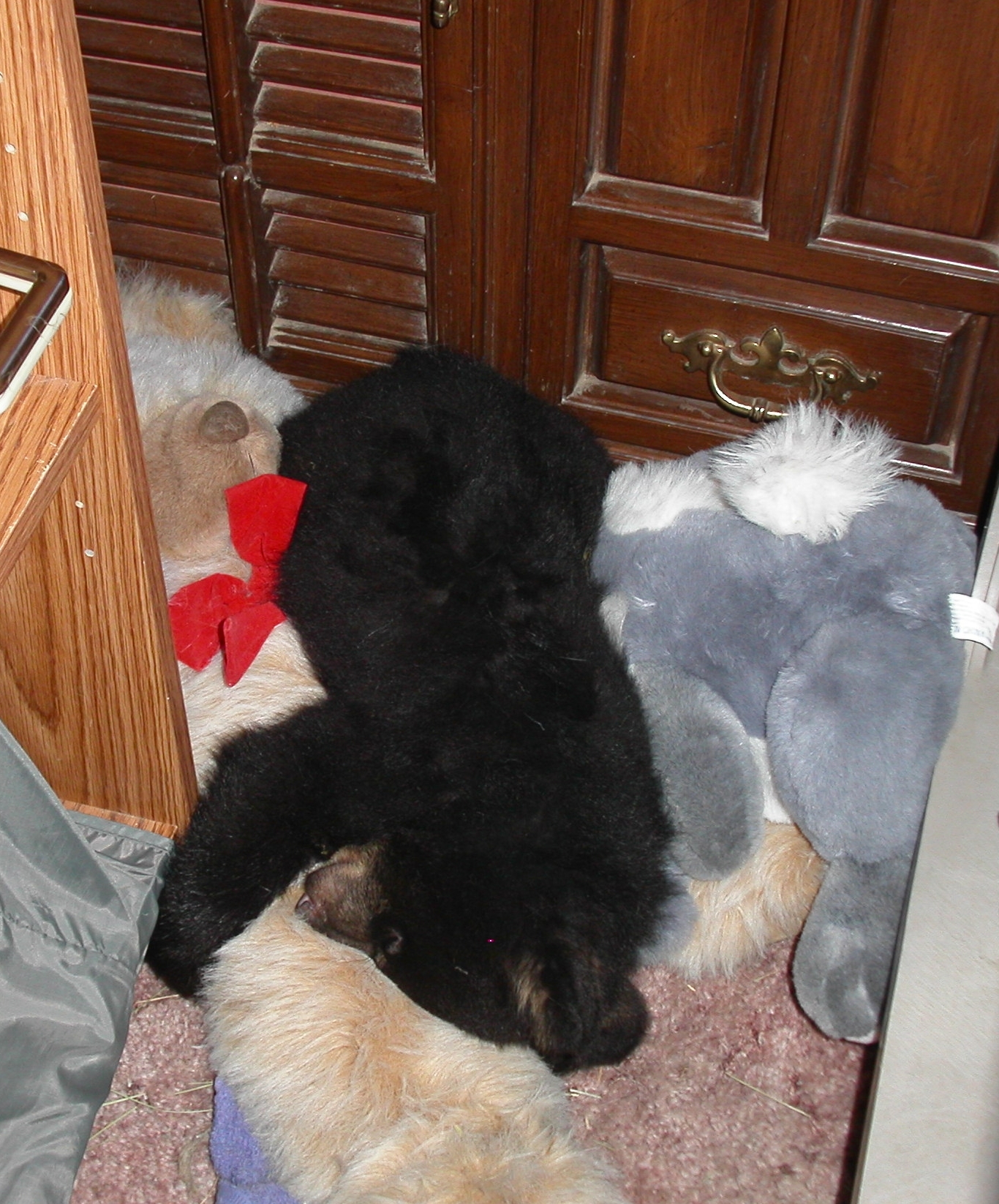
We were thrilled to receive Shenandoah Bright on 2/20/04 from Washington - our youngest cub yet. Eyes still closed at approximately three weeks old, she was a little black bundle of joy. Her arrival also meant we could finally start the training film. Little did we know that this was definitely going to be the year for that project, way beyond what it meant to have such a young cub to start with. To see the start of play behavior in such a helpless, tiny cub was very exciting. We watched as her eyes slowly opened, as she began to focus on objects over the days to come, and as she gained her legs and was all too soon crawling all over the place.
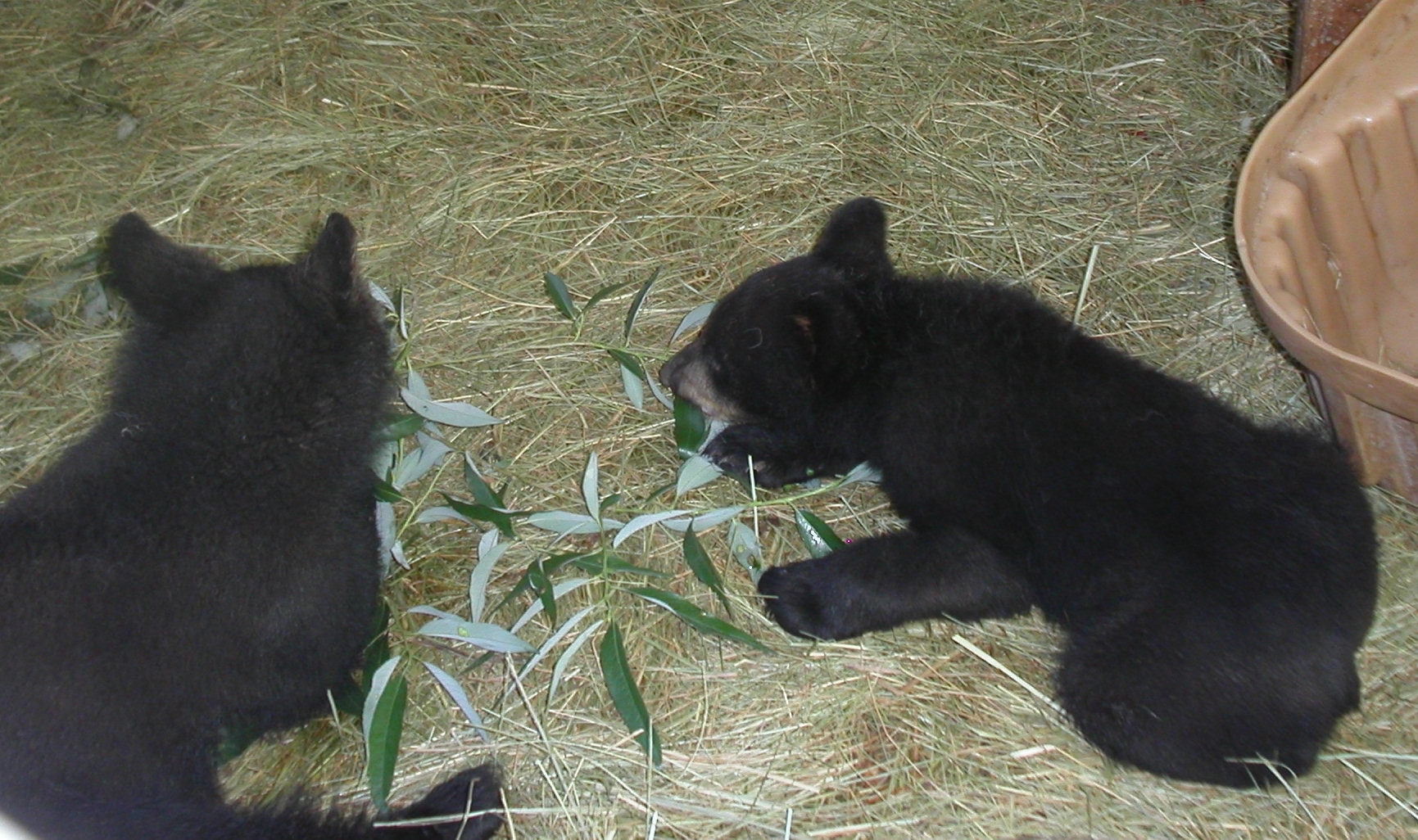
On May 20 another cub from Washington arrived. Chitwhin (Quinault for bear) weighed in at about 10 pounds and was very shy with Shenandoah. Neither knew what to make of the other, which is fairly typical when cubs first meet. It took several days for Shenandoah to get past the jealousy. Then she decided this little black critter that looked familiar was more fun to play with than be jealous of. It
started with a run around the enclosure which enticed Chitwhin to follow and before long both cubs were wrapped in one big bundle, wrestling and rolling all over each other.
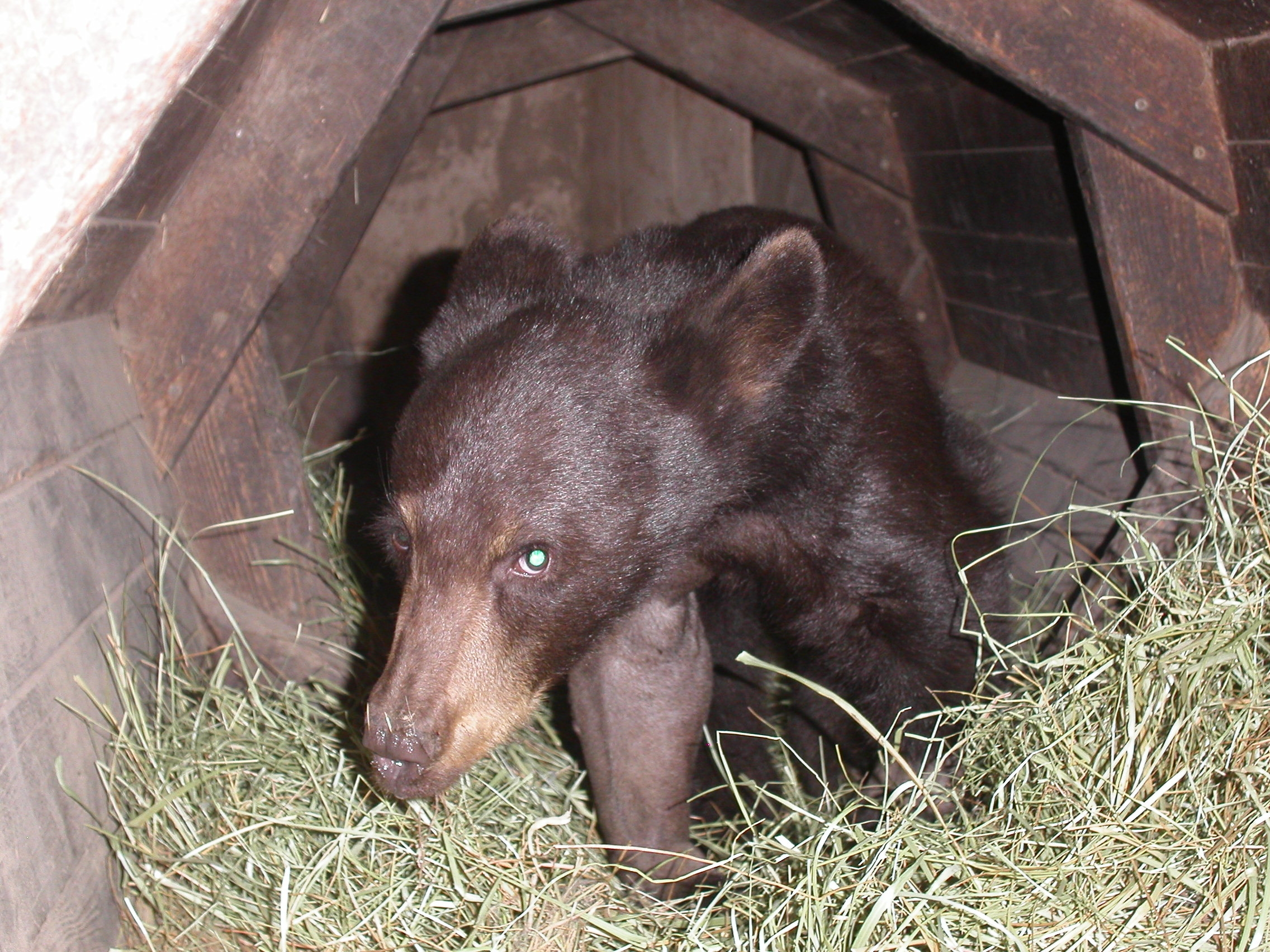
On July 17 Makalapua arrived. She was found with her mother on a mountain road frantically trying to get over the cement dividers that lined the road. She was dragging one hind leg and a front leg, but doing her best to follow her mother. No one will ever know how long mom and the poor little cub were there, mom trying to get her off the road and out of danger while the cub was already helpless and unable to follow. A very caring man on his way home about midnight spotted the cub and mother. He stopped, saw the injured cub and called 911. Before long the cub was safely in his car on the way to the Emergency Clinic in Boise. Mom could only watch from the slope at the top of mountain road as her cub was taken away. Surely a very sad and confusing moment for her. We can only hope she somehow understood she couldn't help her cub and that now help had arrived.
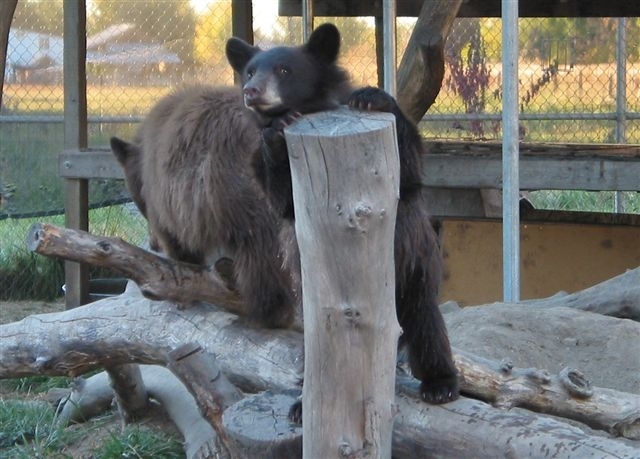
After sewing up the lesions on the back leg, putting the dislocated hip back in place, and putting the shattered front leg back together, Makalpua came to IBBR. For the first few days she bawled loudly at times. It was probably more calling for mom than any residual pain from her injuries. She is doing fine and is now in the main enclosure with other bears. Her broken front leg has healed and she has about 80% normal movement. The lesions on the back leg are also healed. Her hip dislocated again twice and remains dislocated today. However, she does not seem to experience any pain or discomfort, runs as fast and normal as any bear and climbs just as the other bears only with a bit more caution. All indications are that she will be released in spring. We also had several arrive with wounds, but all have healed nicely.
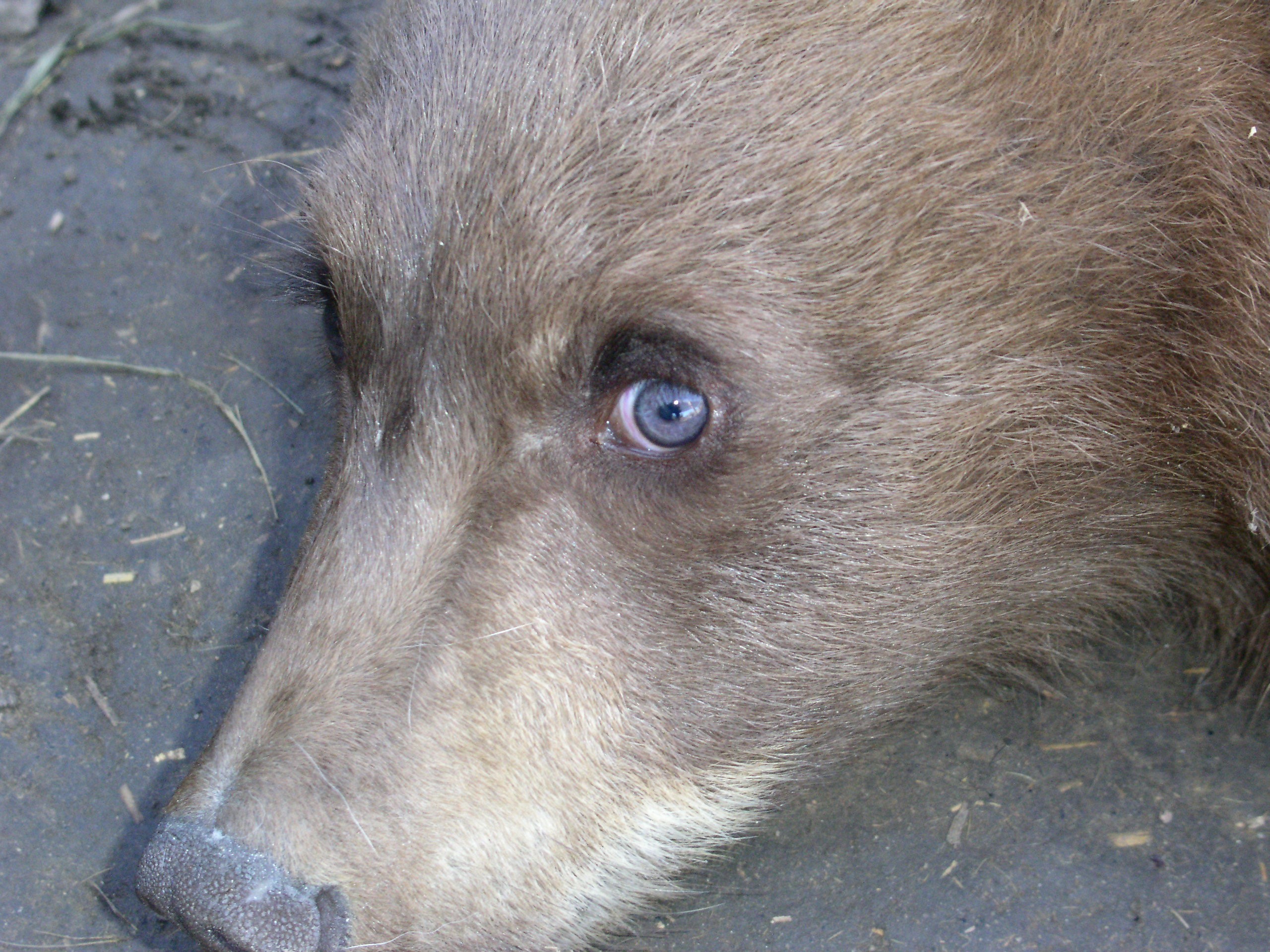
After the arrival of Makalapua bears started to arrive from Idaho, Oregon, Utah, Washington, and Wyoming almost on a weekly basis. The most we have taken in during past years is 23. I jokingly said we were aiming for an even two dozen. When the 25th bear arrived, I raised it to three dozen. When the 35th bear arrived, I stopped talking. The last cub of the year, number 37 arrived Christmas Eve from an area near our release site here in Idaho. Just maybe, this cub's mother was a bear we saved and released years ago. We have 19 bears from Idaho, 13 from Utah, 3 from Washington, 1 from Oregon, and 1 from Wyoming. So many of the cubs arriving late summer and into fall were very tiny, ranging from 10lbs on up to 30lbs. The largest cub today weighs close to 100lbs and the smallest is 15lbs. It's quite a site to see such a varied group of bears, both in size and color. We have black, brown, golden brown, chocolate brown and a really special treat - a bear with sky blue eyes. I've never seen a bear with blue eyes before, nor has anyone I've talked to so far. He is an adorable cub and I can always tell him from the others as his eyes just have a different look about them even if you aren't close enough to see they are blue.
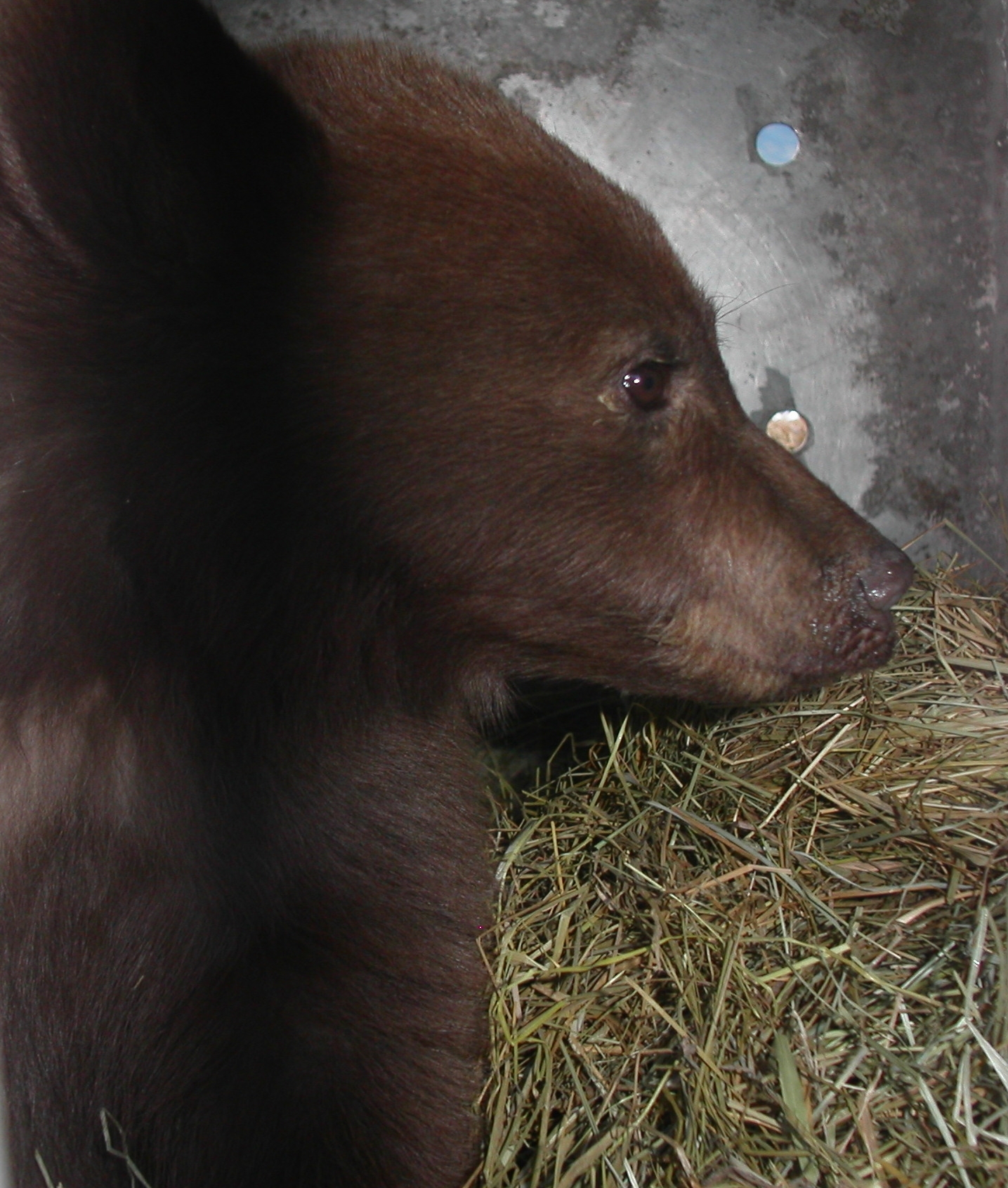
As December ended, we were going through about 100 pounds of dog food each day & four 5 gallon buckets of fruit. The bears also had some fish and lots of acorns. Normally we would start tapering the food in November to prepare for hibernation. However, many of the cubs are tiny and don't have sufficient weight to survive hibernation. During previous years we found that even when food was available, if the cubs were ready to hibernate, they would. With such a varied group of bears, some ready, some not, we will continue providing food during the winter months. Those that choose to hibernate will do so even with food available and the others will continue to eat throughout the winter.
At most we see 8 or 9 bears out in the main enclosure and 4 or 5 out in the smaller hibernation enclosure on any given day. As we hoped and expected, both enclosures are holding up fine so far and the cubs are not yet experiencing any stress due to the numbers. At this time of year they hardly use half the enclosure and stay close to the den area.
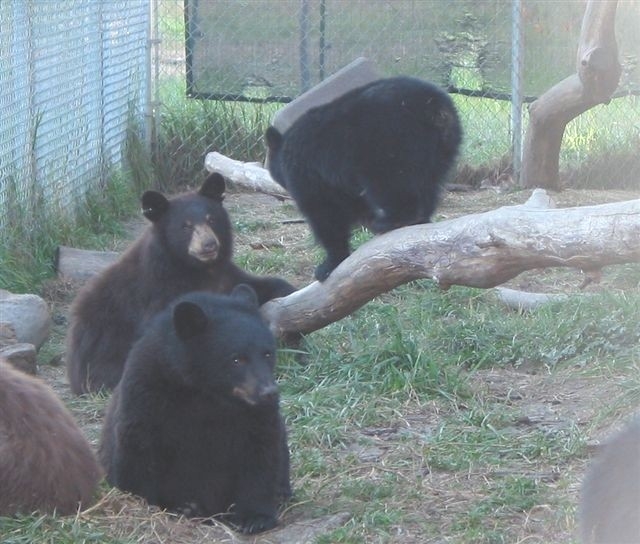
The decision was made early on to just winter the bears through and do a spring release. That was long before we realized just how many bears would come in. None of the bears are exhibiting any stress from the numbers. If anything, the wrestling and chasing options now seem greatly enhanced. There is always another bear who will engage in play rather than sleep. We decided to stick with the original plan and not make several trips during winter. To prepare for hibernation, we built 4 more dens and added room to the dens already there. Bears will crowd in a den together until you wonder how anyone can breathe or move. We can't force them to spread out so we just made sure there was enough shelter for everyone so they could split off into their own little groups.
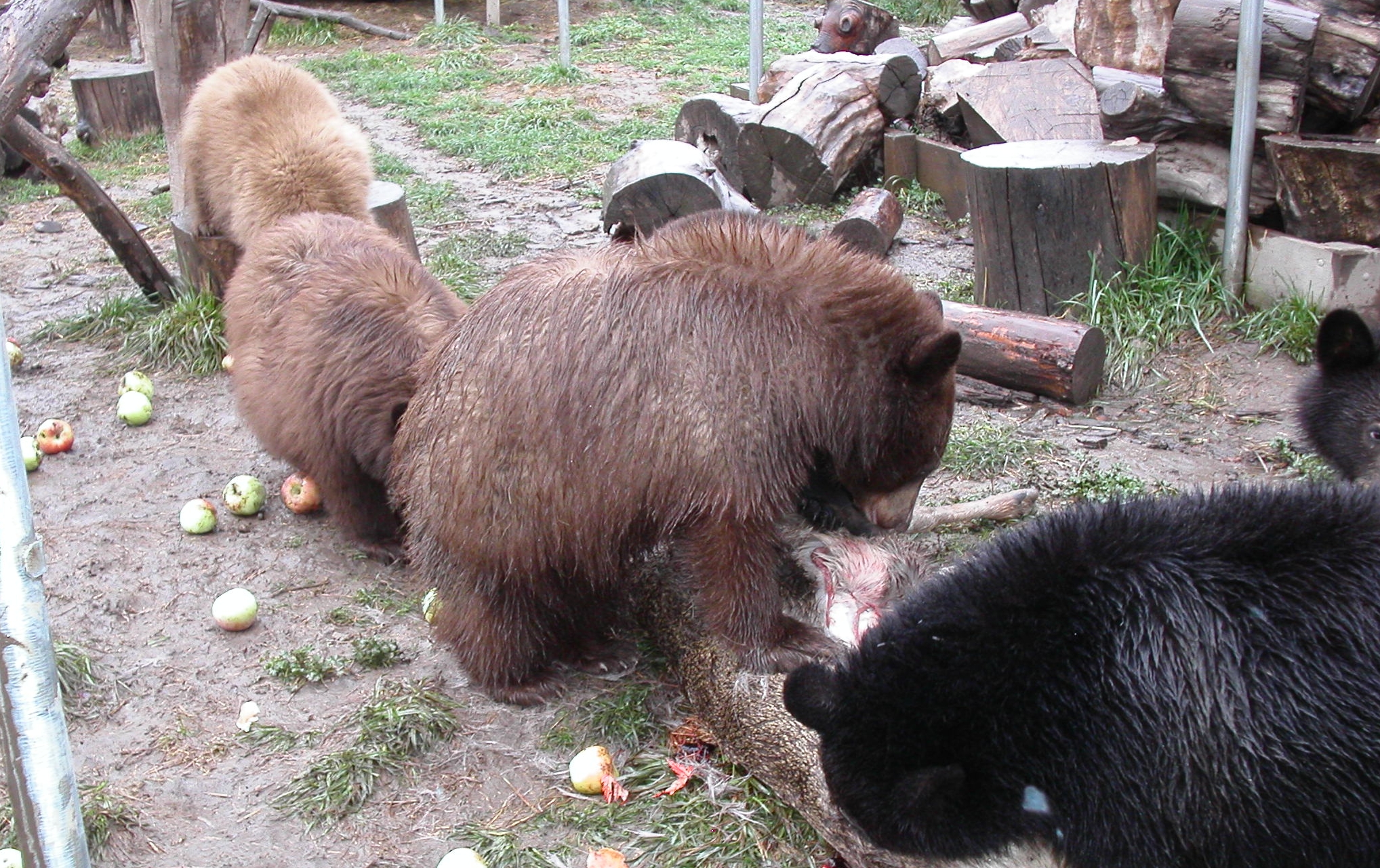
One of the things we learn each year is how we can improve or change the facilities to accommodate new situations. With 37 bears (so far), this year was definitely a time to be very aware of what changes we needed to make to prepare for another situation like this in the future. The hardy pasture grass normally survives the bears even during the winter months. However, with more bears in the main enclosure than ever before, the grass couldn't handle it. It will come back in spring, but in the meantime we have a muddy mess all over the enclosure. That was one of the reasons we covered the den areas in a previous year. The bears used that area so much that we ended up with nothing but mud. Now we faced that same situation throughout the enclosure only this time it was from so many bears eating the vegetation rather than stomping on it. We are now trying to raise funds or get materials and labor donated to build a roof over the enclosure. It's a large span to cover which means we may not be able to afford it, depending on the requirements for the building permit.
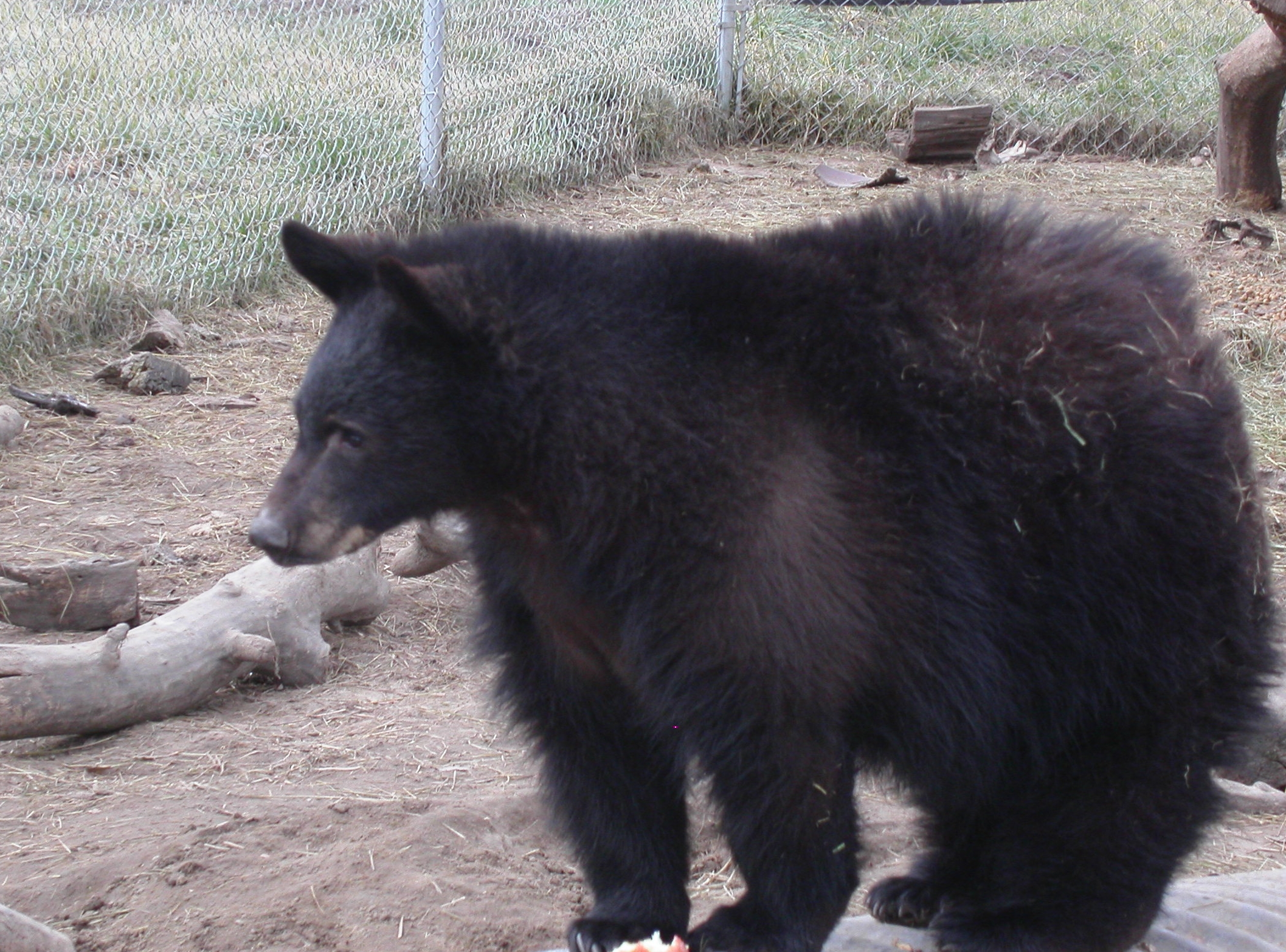
To increase the number of dens without taking up space normally used in the enclosure, we decided to add 5 or 6 hollow log structures. Borah High Special Ed class is building them for us starting the end of January. We currently have one in the hibernation enclosure and it's the only solid object the bears have failed to destroy over the past 16 years. They love the hollow log as it's a place to nap, play tag around it, run through it, lie on top of it, and finally a nice shady spot during hot summer days and more importantly, the favorite place to den. The log is about 7' long and 2 =' wide. As many as four or five bears will den in the log if they have the opportunity. With several of them in the enclosure, they will serve multiply purposes and still provide plenty of denning area for the a large number of bears. Unlike the extra dens we have in the enclosure now, we won't have to take these out each spring. Plus, if we can afford to build the roof, we can put the logs throughout the enclosure instead of having just one protected den area.
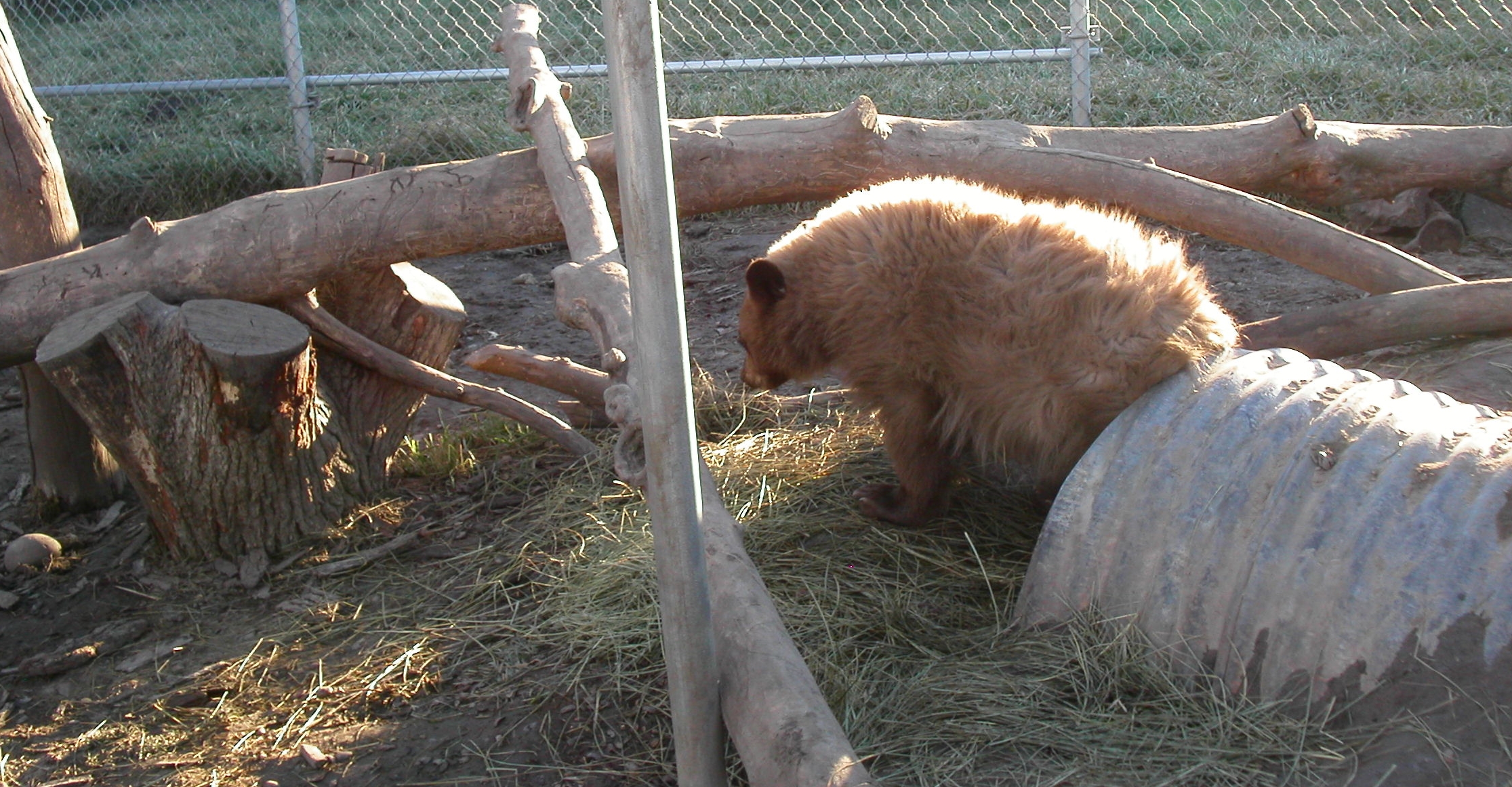
Sometime in March the bears that do hibernate will come out of the dens for good. From then on, it will be a wondrous sight to see so many bears, wrestling, romping, playing in the swim tub, and napping during the midday hours. Once again this past year, the bears have been very hard on the swim tub. In spring we have new leaks that we will need to fix or replace the tub once again. I wonder just how many bears at one time will try to jump in the swim tub come spring - what a sight that will be! We are really looking forward to spring and the fun that will bring with non-stop wrestling, chasing, rolling around, swatting, climbing, and general all around wildness. It's one thing to see it with a few bears each year. It's quite another to have so many yearlings all having fun and acting wild at the same time. With much more power, determination, and weight to back it up, we'll have to keep a close eye and them for the remaining two months before release to see just what they plan to demolish next.
Sometime the middle of May or first week of June, we will begin the release process. Out of state bears will return to their home states for release. The 19 Idaho bears will be released in groups of 4 or 5 at a time over a 3 day period. Spring releases are always an amazing time as we get to see bears back in their natural habitat doing what bears do. For about 20 minutes some of them will munch on vegetation, climb trees, romp in the onion beds, wrestle around a dead log, dig up the dirt, and just enjoy their new freedom. Then they will slowly wander out of sight into the woods, one heading up the group and the others following suit.
I am so grateful to look out and see a whole herd of bears who would have died had they not received help from the public and the state wildlife agencies. I congratulate the public for being so determined and persistent in reporting the orphaned cubs and following up with state agencies to be sure they brought the cubs in. I also commend the state wildlife agencies for making efforts to find and bring in the cubs once they received reports. Some agencies tried for two weeks to locate and capture the cubs once they received reports of an orphaned cub.
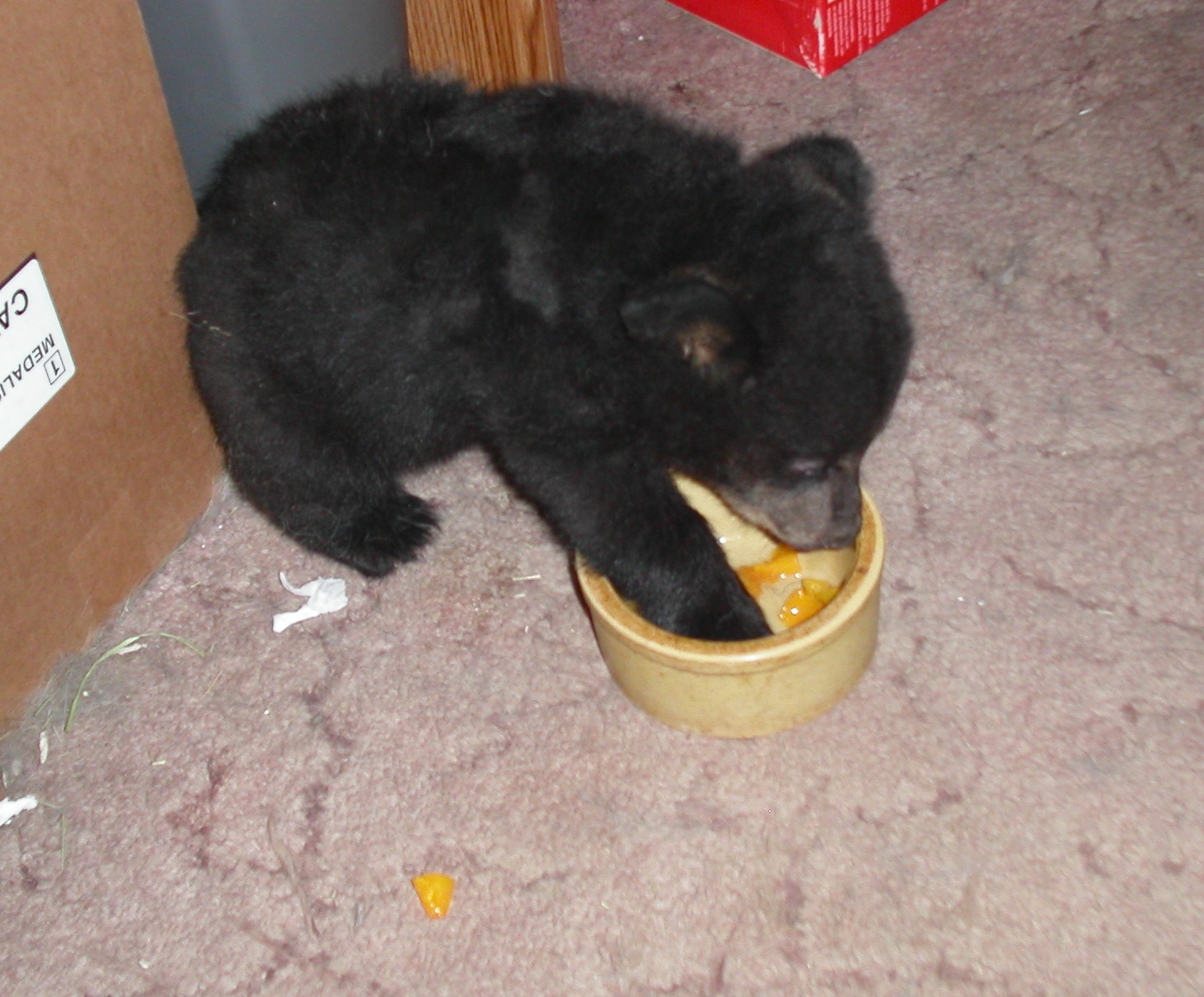
Happy New Year to everyone and thank you all for your support and help. Please continue to stay with us as it's an overwhelming task to handle all these bears for another 5 months. If you can share with us to help build the roof over the main enclosure, your donation would be very appreciated. Just flag it for "Roofing Project" and we will direct the funds to that project. I would like to add a special thank you to WSPA in Boston and London. WSPA has helped fund the bear program for several years and really stepped up to the plate this year to help with all these bears. It costs about $300-$400 every two weeks just for dog food alone to feed this group of bears. Without WSPA's support, IBBR and the bears would have been in serious trouble. I've said many times that my loyalty to WSPA for their help in saving bears all over the world is never-ending.
Thanks not only to WSPA, but each and every single person who helped this year, we were able to accept all these cubs and any more that turn up looking for help in 2005. I may work 20 hours a day, worry every second, stress over money, and wonder if I'll ever get enough sleep, but the reality is that I am more blessed than any one person has the right to be. Each day I look into the eyes of these 37 wonderful spirits and share a brief period of their life. There is nothing that warms my heart and soul more than seeing all the happy, fat, sassy little bears enjoying life and knowing they will be free again come spring. Even better, I get to share in that joy with them. You may have heard me say this before - Native Americans say if you have bear medicine, you have the power of introspection and therefore the ability to manifest your goals into reality. IBBR was certainly blessed with bear medicine this year and I wish you all much bear medicine during 2005.
Sally Maughan